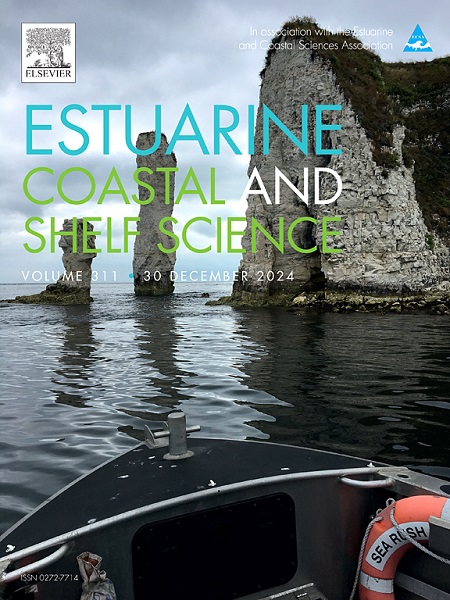Jellyfish journey live tracking using floating electronic tag
IF 2.6
3区 地球科学
Q1 MARINE & FRESHWATER BIOLOGY
引用次数: 0
Abstract
Gelatinous organisms are key players of marine ecosystems, however underlying processes of their dynamics and behaviour are still to be cleared up. Understanding the areas of production, where the blooms go and what they become are therefore of major interest in marine ecosystem management. We used floating electronic tags developed in our laboratory for jellyfish live tracking. A special attention was put on the welfare of the organisms as the tag was floating and simply attached with a fishing line around the manubrium. In situ experiments were carried out in Bages Sigean lagoon (France) where a perennial population of the Mediterranean jellyfish Rhizostoma pulmo is established. Up to 47 deployments, from 20 min to 28h, took place in 2022 and 2023 summers. Live tracking indicated that the floating device did not influence the jellyfish trajectory nor its speed. A 28-h trajectory showed that jellyfish movement can be influenced by the wind but also by other environmental factors. The relatively small area covered by the jellyfish compared to the control float one, suggests that movements significantly influence its trajectory as a response to the environment. Jellyfish were successfully recovered suggesting in a near future repeated individual measurements processes over longer deployments.

利用浮动电子标签实时跟踪水母的旅程
胶状生物是海洋生态系统的关键角色,但其动力学和行为的潜在过程仍有待澄清。因此,了解生产区域、藻华的去向以及它们变成了什么,是海洋生态系统管理的主要兴趣所在。我们使用实验室开发的浮动电子标签来跟踪水母的动态。特别注意的是生物的福利,因为标签是漂浮的,只是用一根钓鱼线绑在柄上。现场实验在Bages Sigean泻湖(法国)进行,在那里建立了地中海水母的多年生种群。在2022年和2023年的夏季,共进行了47次部署,时间从20分钟到28小时不等。实时跟踪表明,浮动装置不影响水母的轨迹和速度。28小时的轨迹表明,水母的运动不仅受到风的影响,还受到其他环境因素的影响。水母覆盖的区域相对较小,这表明水母的运动显著影响了它对环境的反应轨迹。水母被成功地恢复,这表明在不久的将来,在更长的部署过程中,重复的个人测量过程。
本文章由计算机程序翻译,如有差异,请以英文原文为准。
求助全文
约1分钟内获得全文
求助全文
来源期刊
CiteScore
5.60
自引率
7.10%
发文量
374
审稿时长
9 months
期刊介绍:
Estuarine, Coastal and Shelf Science is an international multidisciplinary journal devoted to the analysis of saline water phenomena ranging from the outer edge of the continental shelf to the upper limits of the tidal zone. The journal provides a unique forum, unifying the multidisciplinary approaches to the study of the oceanography of estuaries, coastal zones, and continental shelf seas. It features original research papers, review papers and short communications treating such disciplines as zoology, botany, geology, sedimentology, physical oceanography.

 求助内容:
求助内容: 应助结果提醒方式:
应助结果提醒方式:


